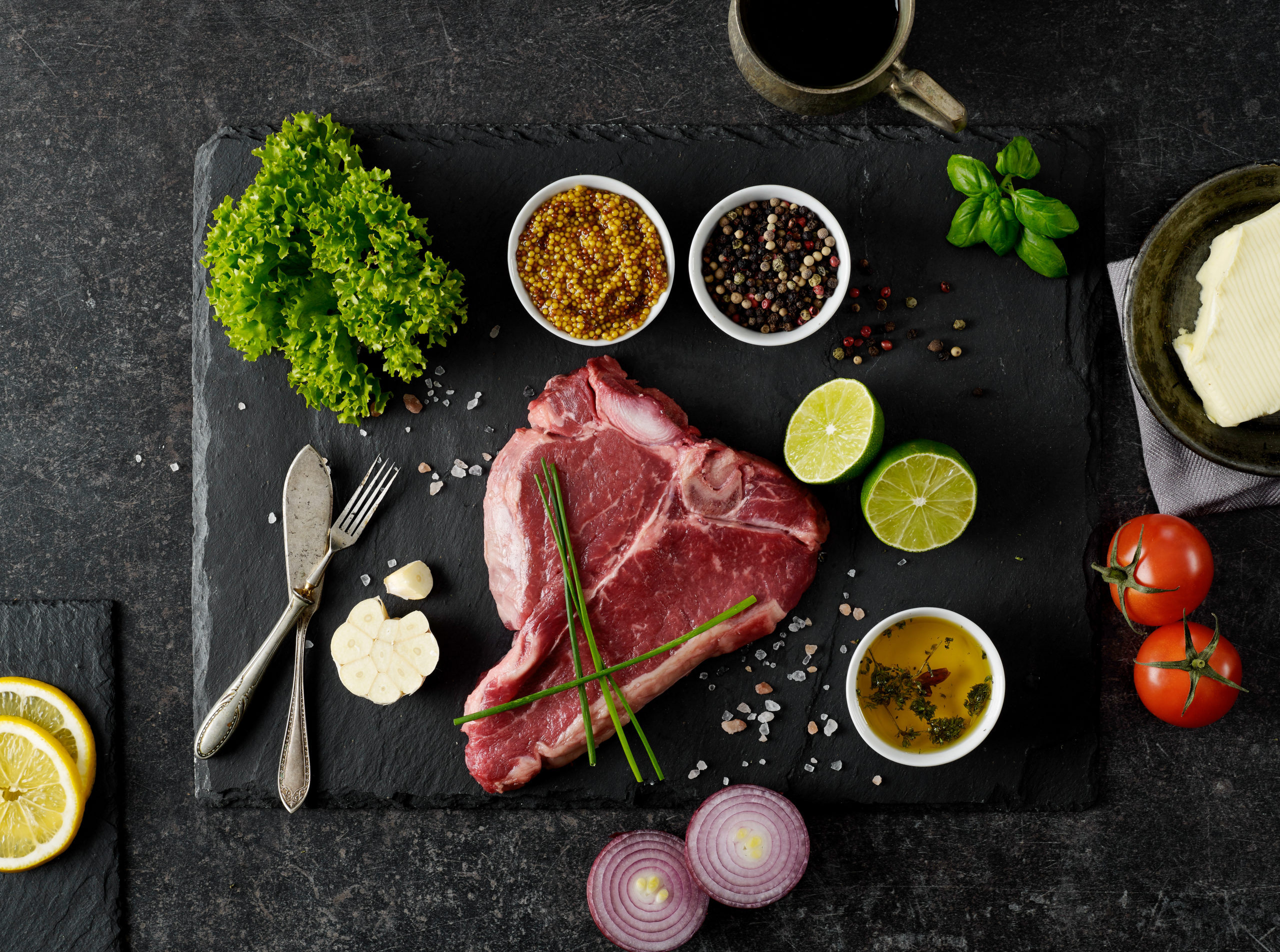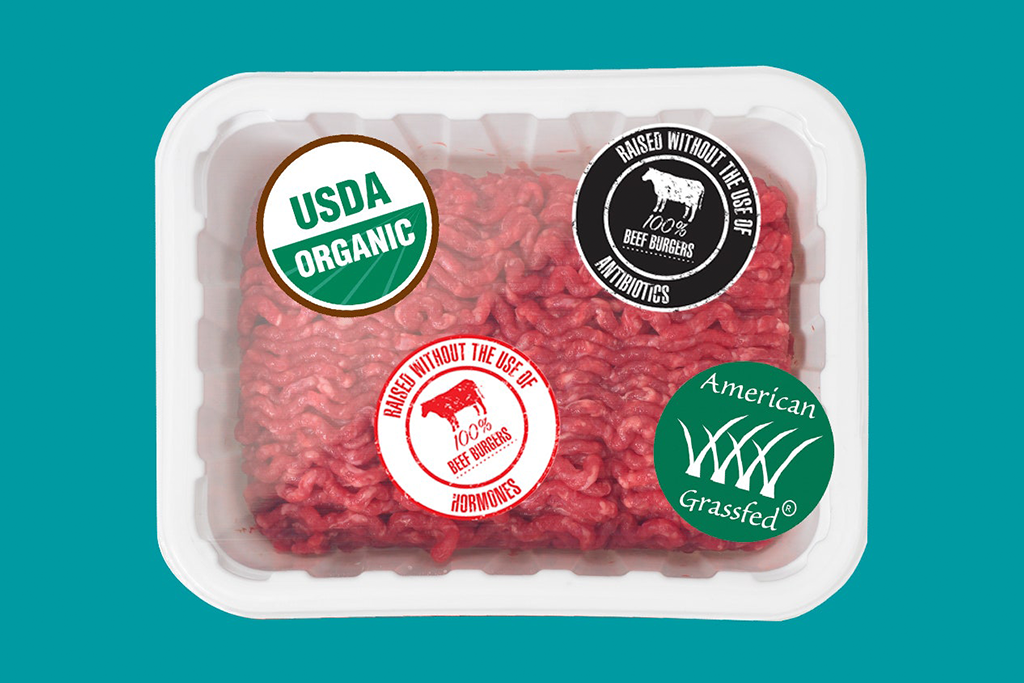ARTICLE
Why the Diet of the Animals You Eat Matters

You are what your food eats.
We all know the saying, “You are what you eat.” But if you eat animal products, you are what the animals eat too. When it comes to meat, for example, there can be some pretty significant differences in the quality of the meat depending on how the animal was fed throughout its entire livelihood.
According to Michael Pollan, “The diet of the animals we eat has a bearing on the nutritional quality, and healthfulness, of the food itself, whether it is meat or milk or eggs…some of our food animals, such as cows and sheep, are ruminants that evolved to eat grass; if they eat too many seeds they become sick, which is why grain-fed cattle have to be given antibiotics. Even animals that do well on grain, such as chickens and pigs, are much healthier when they have access to green plants, and so, it turns out, are their meat and eggs. For most of our food animals, a diet of grass means much healthier fats (more omega-3s and conjugated linoleic acid, or CLA; fewer omega-6s and saturated fat) in their meat, milk, and eggs, as well as appreciably higher levels of vitamins and antioxidants.” Grass-fed beef is often considered healthier for you than conventional grain-fed beef for multiple reasons.
- Grass-fed cows get more nutritious food than grain-fed cows. This is because they have the freedom to roam and graze on a wide variety of (often wild) grasses, sedges, rushes, shrubs and herbs, each with its own nutrient profile. Comparatively, grain-fed cattle are fattened up with feeds that are typically made of soy or corn, which fatten cows more quickly than grass does on its own. The grain that’s used is usually genetically modified. It’s also often grown with fertilizers and pesticides to keep bugs away. Note: A cow’s body is designed to metabolize corn, so these animals can be very susceptible to contracting bacteria, parasites and illnesses. To offset this, the cattle are pumped with antibiotics – sometimes daily — which is then consumed by humans that purchase the cow meat in grocery stores (1, 2, 3).
- 100% grass-fed beef contains more calcium, magnesium, potassium, zinc, phosphorus, beta-carotene and iron than grain-fed beef. It also has higher levels of B vitamins – specifically thiamine (B1) and riboflavin (B2), as well as the fat-soluble vitamins A, D, E and K.
- Grass-fed beef is leaner than grain-fed beef and has less fat per serving. This means that you’ll consume fewer calories per serving of grass-fed beef than when you eat grain-fed beef.
- The composition of fatty acids in grass-fed and grain-fed meat is also different:
- Monounsaturated fat: there’s a lot less of it in grass-fed beef than in grain-fed beef.
- Omega-3s and 6s: Grass-fed has higher levels of omega-3s than conventional beef (as much as five times higher!), and contains an ideal ratio of omega-3 to omega-6 fatty acids.
- Conjugated linoleic acid (CLA): Grass-fed beef is one of the best sources of Conjugated Lineolic Acid, or CLA. CLA exerts potent antioxidant activity and studies have documented CLA’s ability to help prevent diseases like cancer, diabetes and heart disease.
- Grain-fed cows are typically raised in confined animal feeding operation lots, also known as feedlots. This practice could be viewed as animal cruelty since the animals aren’t free to roam and live as nature intended.

When possible, look for a label that says “100% grass-fed” and “organic”.
This is really important because there’s no official definition or USDA marketing standard for “grass-fed” meat. In other words, there’s no way for a consumer to really know just by looking at a label whether or not the cow has only been fed their mother’s milk, grass and other greens throughout their entire lives, or if they’ve only spent a relatively short time eating grass — unless the packaging says “100%” or “grass finished” on it (4).
The USDA standards for “organic” meat are also a little blurry. They specify that meat may not be labeled as organic if it has been treated with hormones or antibiotics; “organic” meat must come from animals that had access to the outdoors, as well as natural, vegetarian feed. However, the feed given to the animal may include a variety of grains, which notably aren’t part of a cow’s natural diet (4). Remember, since cows don’t naturally metabolize grains like corn, they are more likely to develop illnesses and, or require antibiotics — which can subsequently have negative health consequences for the person that consumes this meat.
It may be a bit more difficult to find beef that’s both grass-fed and organic — and more expensive — but making the extra effort can have notable positive health benefits for you and your family long-term.
100% grass-fed, organic products we think you’ll love.
- Paleovalley – Inspired by holistic nutrition, Paleovalley offers 100% grass-fed, organic, and non-GMO beef sticks, as well as pasture-raised turkey sticks, with no hidden ingredients. Paleovalley 100% Grass Fed Beef Sticks are notably the only beef sticks in the USA made from 100% grass fed/grass finished beef and organic spices that are naturally fermented. Paleovalley also uses pasture-raised turkey for their turkey sticks, which means that the turkeys have full access to outdoor, pesticide-free pastures with plenty of grass and insects for them to eat. Their turkey is:
– free of antibiotics, steroids, and hormones
– gluten-free
– soy-free
– dairy-free
– naturally fermented (this means they have gut-friendly probiotics!)
(Save 10% on Paleovalley beef and turkey sticks with this link, and this one!)
- Thrive Market – This ecommerce website offers a membership for health-conscious consumers that includes:
- discounted prices on over 6,000 organic and sustainable products
- carbon-neutral shipping from our zero-waste fulfillment centers
- access to 500+ Thrive Market products, deals, rewards, and free full-size product gifts that are exclusively available for members
Thrive Market is very adamant on their website that they share these values:
- Certified Organic
- BPA Free
- Grass-Fed
- Pasture Raised
- Gluten Free
- Paleo
- Dye and Color Additive Free
We highly recommend that you check out Thrive Market’s Organic Beef Jerky — sourced from pasture-raised, grass-fed, organic beef. Each batch is marinated in organic apple cider vinegar, honey, and savory spices, and then smoked low and slow until it’s deliciously tender. This Paleo snack is also free of artificial ingredients, preservatives, gluten, and soy!
Thrive Market also sells Turkey Jerky, made from free-range, organic turkey that’s marinated in organic apple cider vinegar, honey, and spices, and smoked to perfection. It’s free of artificial ingredients, preservatives, and gluten. This snack is also Paleo-friendly 🙂
- US Wellness Meats – Voted Best Online Food/Product Supplier by Paleo Magazine in 2012 & 2013, US Wellness Meats is regarded as a supreme resource for Paleo, Primal, and Real Food. They provide and deliver more than 300 grass-fed, pastured, wild-caught, and free range products right to your doorstep. They specialize in hard-to-find favorites: sugar-free bacon/sausages/ham, bones, broths, gelatin, pemmican, organ meats, Whole30 Approved and AIP-friendly items, tallow/lard/suet, pet products, and more!
If you’re based in the United States, and you’re looking for truly grass-fed/grass-finished meat or wild caught fish, take a look at US Wellness Meats. Tell them that we sent you 🙂
Disclaimer: We like to help people live healthier, and in doing so, we may provide information about specific health products in order to help the public make educated health decisions for themselves. Please note that we may earn a commission if you click on the links in this article. With that being said, we only promote the products we truly believe in! We appreciate your support of Biohacked and the biohacking community.
References
